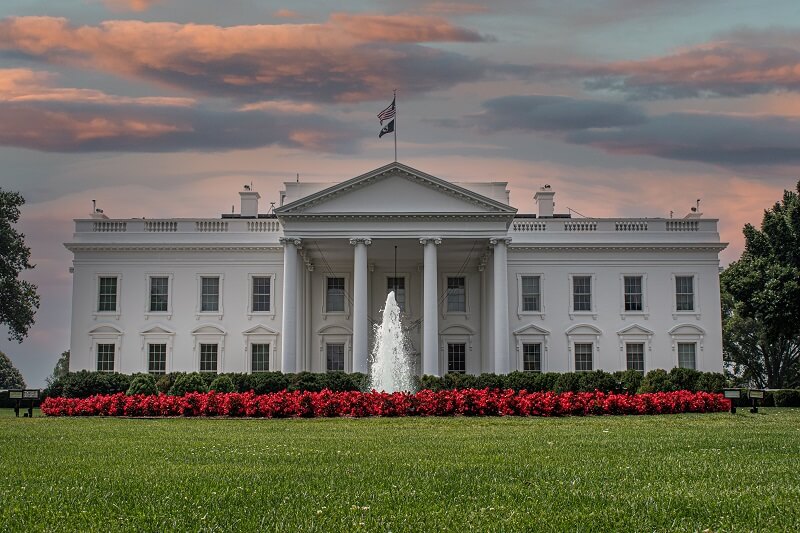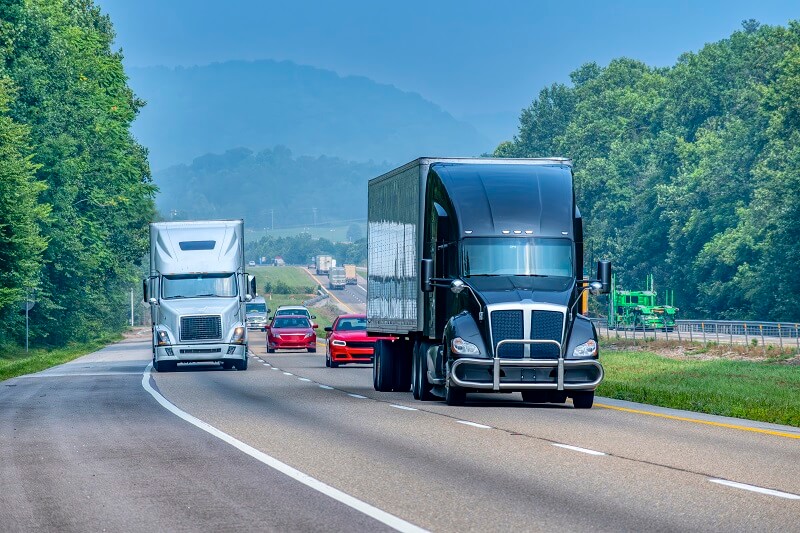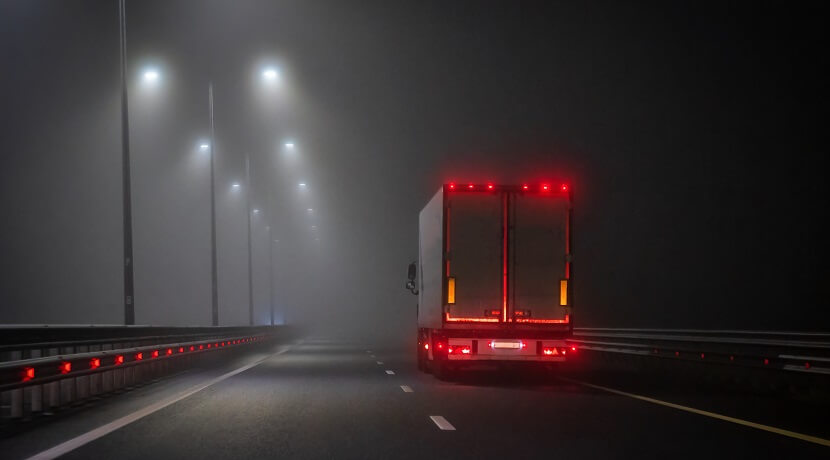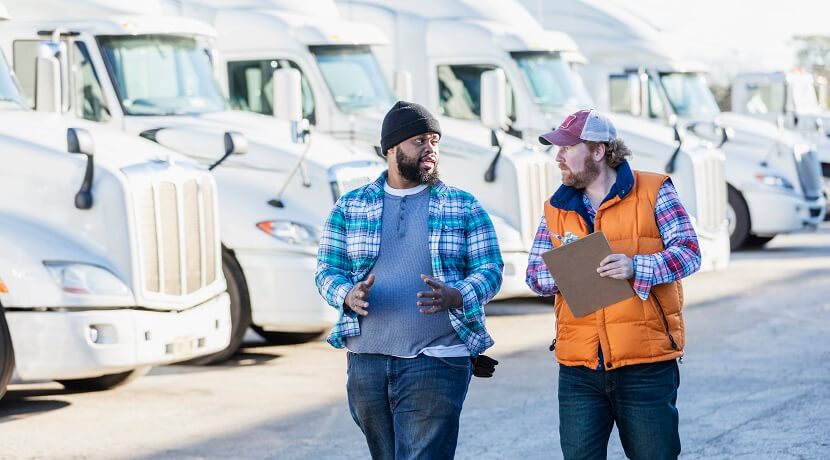
How Will Trump’s Election Victory Impact Trucking?
On November 5, voters elected Donald Trump as president for the second time, making him just the second president in United States history to be elected to non-consecutive terms. With all 50 states called by the Associated Press, it appears Trump will hold a 312-226 edge in the Electoral College over Vice President Kamala Harris when the results are confirmed on December 17.
Trump’s re-election has thus far been seen as a promising development by the trucking industry, and one that drivers, owner-operators, and industry groups representing carriers supported before voters went to the polls.
No one knows exactly what the next four years have in store for trucking as the freight recession finally ends. But thanks to Trump’s first term and positions during campaigning, we can make some fairly educated guesses.
Potentially rapid – and predictable – implications of Trump’s win for trucking include changes to tariffs and repeals of regulations proposed by the current executive branch. This blog will look at how those issues are relevant to trucking and how they stand to change as a new administration takes office.
Could increased tariffs boost the industry?
The first Trump administration featured a significant shift in trade policy, as it introduced tariffs on select Chinese goods and replaced the North American Free Trade Agreement (NAFTA) with the United States-Mexico-Canada Agreement (USMCA).
Unsurprisingly, tariffs were central to Trump’s third campaign, and he has proposed new ones that could impact the trucking industry. His proposed tariffs include a 60% tariff on Chinese imports, a 10-20% tariff on all imported goods, and a 100% tariff on Mexican-made cars.
Trump will have broad executive power to impose tariffs under certain federal statutes, but the new administration may still need to consult with the Department of Commerce and U.S. Trade Representative before those levies become the law of the land. Economists warn these policies could drive up consumer prices and contribute to inflation.
For the trucking industry, however, these tariffs could bring new opportunities for cross-border operations with Mexico. The shift toward nearshoring — which has already been on the rise as Mexico has become the U.S.’ No. 1 trade partner — would likely accelerate, replacing overseas shipping lanes and flights with over-the-road routes from Mexico.
This reconfiguration of freight could mean more loads moving by truck, boosting demand, and possibly helping to offset recent challenges in freight volumes. Additionally, it could be a boon for carriers and freight brokers who already do considerable business south of the border.
What controversial regulations will go by the wayside?
During the Biden administration, regulations affecting the industry were fairly common developments – often coming from the Department of Transportation (DOT), the Federal Motor Carrier Safety Administration (FMCSA), or Environmental Protection Agency (EPA). To discuss all of them would take much too long. Additionally, some rules won’t be changing.
Let’s focus on three federal regulations that have frustrated the trucking industry and could be modified or rescinded altogether once Trump retakes the presidency:
- Greenhouse gas emissions standards from the EPA
- Speed limiters from FMCSA
- Independent contractor rules from the Department of Labor
In March, the EPA announced a final rule for greenhouse gas emissions that would effectively mandate a certain percentage of electric- or hydrogen-powered trucks to be sold starting with the 2027-32 model years.
With electric Class 8 trucks currently selling for around double the price of their traditional, diesel-powered counterparts, the mandate is currently seen by most carriers and industry groups as an unworkable, margin-slashing target. Additionally, power grids across the country would need to be modified to support charging by commercial vehicles and Class 8 trucks at scale.

“For us, I don’t get it. [Buying electric trucks] doesn’t make sense at all for a carrier like us,” said Misty Darnell, Senior Vice President of Corporate Development and Accounting at Paschall Truck Lines, during a recent Transflo webinar roundtable. “I don’t think there’s infrastructure to support it.”
Currently, challenges to the EPA rule are making their way through the court system. However, under Trump’s new EPA, the rule could be repealed – as he indicated could be done during an August press conference in New Jersey. Furthermore, many EPA rules were rolled back during the first Trump administration.
Second, a speed limiter rule has some big supporters in the trucking industry, including many large carriers who already equip their trucks with the technology. Owner-operators are vehemently against the rule, saying it will harm both highway safety and fuel efficiency.
But, the FMCSA has pushed back the rulemaking several times – and now the rule is due to be published in May 2025, some four months after Trump is inaugurated.
It remains to be seen which way the FMCSA will lean under a new presidential administration, but Vice President-elect J.D. Vance co-sponsored legislation that would prohibit the FMCSA from speed limiter mandates on multiple occasions during his recent time in the Senate. It’s well within the realm of possibility that the rule continues to be delayed or is tabled altogether.
Finally, the status of federal rules from the Department of Labor (DOL) outlining if workers – such as professional truck drivers – are to be classified as employees or independent contractors have swung back-and-forth according to the party who holds the White House in recent years. Industry advocates, carriers, and owner-operators are often in support of the lighter regulatory attitudes of Republicans when it comes to labor classifications.
In contrast, labor classification rules proposed by Democratic administrations are seen as harmful to the industry because they often force owner-operators – who want to be independent contractors — to be classified as employees by the fleets they work with. In turn, carriers hesitate to work with owner-operators that they have to classify as employees and incur extra costs on.
In January, the DOL issued a final rule that echoed elements of California’s controversial AB 5 law. Shortly thereafter, Republicans in Congress sought to reverse the rule – an unlikely prospect that would have required a veto from President Biden.
Under the new presidential administration, though, which looks certain to have Republican majorities in both houses of Congress, labor classification rules are likely to revert back to the less restrictive regulations the DOL enacted during Trump’s first term.
Issues important to trucking will shift starting in January
Trump’s second term could bring a pivotal shift to the trucking industry. From new tariff policies that encourage nearshoring to revisiting emissions mandates and speed limiter rules, these anticipated changes offer a mix of challenges and opportunities.
Trucking companies may find a more supportive regulatory environment, which could ease operational pressures. The industry should prepare for an evolving landscape as the new administration takes shape and begins implementing its agenda.



